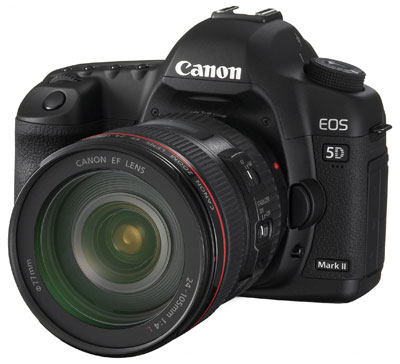From Photojournalist to Filmmaker
Dennis had come to photojournalism during college. In 2002, the 20-year-old student was profoundly affected by James Nachtwey’s book Inferno, a collection of war photographs that spanned several decades. “Those images from past wars—Bosnia, Rwanda, Vietnam—they were the reason I wanted to pursue photojournalism,” Dennis explains. “I wanted to continue in this tradition of bearing witness to try to shake others from their indifference.“
By 2006, Dennis was a photojournalist stringer for the Associated Press in Beijing. That summer, he bought his own body armor and moved to Afghanistan to work as a freelance photographer covering combat operations for the New York Times and Newsweek . Then in 2007, Dennis went to Iraq, where he accompanied military units in areas of intense fighting. His photographs were published in the New York Times , the Washington Post, and the Wall Street Journal , among others. [5]

The Canon EOS 5D Mark II
Back in Afghanistan in 2008, Dennis found himself increasingly frustrated by still photography. “I felt that images were losing their impact, that society has been inundated with so many images that they no longer have the emotional resonance that they once did,” he says. [6] In September 2008, Canon released the EOS 5D Mark II, a still camera that could also shoot high-resolution video. Priced at about $2,000, the camera was affordable to independent journalists like Dennis. He bought it even though the video features were rudimentary:
This was a small, compact portable camera that I could use all my traditional lenses with and get this really high quality video image. But it was never intended for documentary film use or extended production, and so there were a huge number of technical drawbacks to using this camera.
Dennis modified the camera to overcome its limitations. The camera’s principal shortcoming was relatively low-quality audio recording. Most filmmakers recorded audio separately, using professional equipment and a soundman. But this was not an option for a videographer on the run or under fire. Also, Dennis was determined to avoid the time-consuming process of syncing audio and video in post-production.
He scoured online technical forums for a solution, and while in the field with the military located software produced by the hacker community that he could download onto his camera. The software allowed him to record audio directly onto the camera at a higher quality than the factory software allowed. The only obstacle was downloading the relatively large file, given his remote location. He says:
I remember being at an outpost in the Korengal Valley in eastern Afghanistan and just trying to download a 3-megabyte file, which was excruciatingly slow. As soon as it completed, I loaded the firmware up onto the camera and then went on the next patrol.

The Glidecam HD 2000
Over the next few months Dennis made further improvements, slowly converting the relatively light camera into a rig capable of shooting high-quality video in a combat zone. He perfected his sound set-up by commissioning a machine shop in England to produce a custom mount for the three microphones and audio mixer he used to capture sound.
But video quality was still jittery, an inescapable effect of a hand-held camera. Cinematic film and television productions used steadicams—cameras mounted on frames with counterweights that allowed handheld movement without the jitters. Dennis wanted that smooth cinematic look. So he acquired a Glidecam HD 2000, a small version of the steadicam. Unfortunately, even the small version of the steadicam more than doubled the weight of the camera to 15 pounds. Dennis was also carrying 25 pounds of body armor and 30 pounds of gear. He devised a system to take the weight off his arms when the camera wasn’t in use:
I attached [to] my body armor a rigging system in which I could mount the camera to my body armor, just simply to rest my arms during these very long combat patrols. But then when I would need to film, I would essentially unsheathe it and pull it off of this mounting system.
Even with the system in place, it took months to build up the strength to hold the steadicam for extended periods of time. “But as my arm got stronger and my ability got better using it, I could pull these long tracking shots,” he remarks.
When Dennis arrived in Helmand Province in the summer of 2009 to embed with a company of Marines, he wasn’t thinking about making a documentary film. He wasn’t even sure what he would use the camera for. But he knew that he had a powerful tool and that he could use it.
[5] Other outlets that published his work included Time , Newsweek , the Guardian , Rolling Stone , Le Figaro Magazine , Financial Times Magazine , Mother Jones , and Der Spiegel .
[6] Author’s interviews with Danfung Dennis in Palo Alto, CA on October 10 and 11, 2012. All further quotes from Dennis, unless otherwise attributed, are from these interviews.